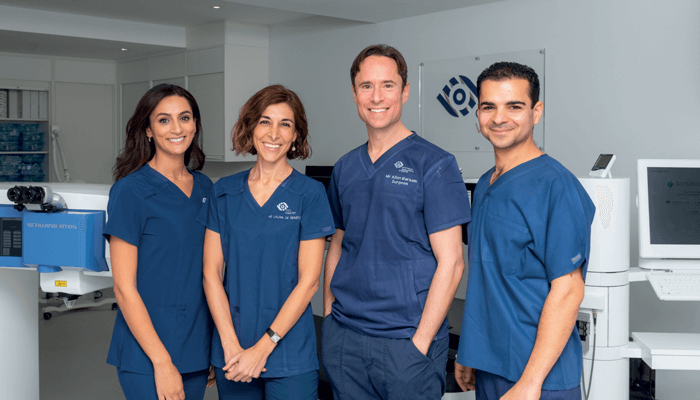
Could you introduce yourself and explain a little about your practice?
I’m Allon Barsam, I’m a consultant and partner at OCL Vision based in London and the South East of England. I’ve been dedicated to cornea, cataract and refractive surgery for the last thirteen years – eleven of which have been as a consultant. I do around 1500 procedures a year, of which 1,000 are laser vision correction and 500 cataracts. I was the first surgeon in the UK and one of the first worldwide to carry out SmartSight lenticule extraction surgery.
How do you think patient expectations have changed for refractive surgery as devices have become more sophisticated?
I think patient expectations have increased and this is a reflection of the achievable outcomes. One of our challenges is to try and communicate with patients about what their expectations should be. A 22 year old with a minus three prescription shouldn’t expect the same as a 60 year old with a plus three prescription – it’s almost like treating a different condition. I think one of the key roles of refractive surgeons is to tailor the discussion to what the patient should expect – patients will (rightly) never forgive you if they develop a problem afterwards they weren’t warned about beforehand!
Can you talk about your experience with femtosecond lasers and the Schwind ATOS in particular?
Some surgeons can be very brand loyal and stick with the machines that were introduced earliest but I’ve moved across a variety of platforms in all of my experience. When we set up OCL Vision we had an open discussion about which femtosecond laser we thought was best. Back then the ATOS was just a prototype, hadn’t received CE mark approval and wasn’t used widely in clinical settings. However it gained market approval just around the time of the COVID-19 pandemic and so we were able to get the Schwind ATOS installed in September 2022. From then on I’ve done hundreds of FemtoLASIK cases and over 50 successful SmartSight lenticule extraction procedures with the ATOS laser.
What are the advantages offered by the Schwind ATOS?
Firstly, it provides a perfectly centered LASIK flap and perfectly centered lenticule. This has huge advantages and takes so much stress out of surgery – after all, making sure your flap isn’t decentered is one of the main skills of LASIK because if the flap is decentered you can’t put down your excimer laser ablation in the space you want to.
Schwind has many years of experience in really being a world-leader in imaging and application for lasers. They excel in techniques such as cyclotorsion control, infrared scanning and pupil tracking. All of these technological adaptations they build into their various platforms. They’ve really learned what is needed and put the best of it into the ATOS. The other advantage is that it’s very low pressure – it’s more comfortable for patients as they don’t completely lose vision during the process or complain of pain during the laser application – and the low energy means minimal inflammation.
Could you talk about the refractive outcomes you’ve seen with the SmartSight lenticule extractions?
To be honest, we’ve been blown away by the outcomes. We were expecting it to be similar to SMILE™ because in terms of what we are doing it is broadly the same kind of operation. But the differences are so important – the shape of the lenticule tapers out with SmartSight into a genuine transition zone as there is no edge cut. So, we’re not getting significant amounts of epithelial hyperplasia or remodeling and I’ve never seen ‘cap crunch’ – a well described complication of SMILE™. What this means is that we don’t have to use a nomogram adjustment and patients’ visual recovery seems to be quicker. In my experience if they aren’t 6/6 on the first day they are very close to that and then after a few days everyone has been 6/6, 20/20 or better.
What are your pearls of wisdom for using the ATOS?
There is a learning curve – like with all femtosecond lasers – and docking is really important. It’s vital for the patient to be cooperative and compliant and to make sure that the ocular surface is dry and draping is well done. Talking patients through things helps keep them calm and in the right position so doing all of these things we’ve found really help the procedures to be safe, effective and reliable.
Is there anything else you would like to pass on to ophthalmologists about the ATOS? The uptake of SmartSight has been really strong – patients love the idea of keyhole laser vision correction or a flapless procedure. When you have a Schwind product you’re in great hands – the expectation for the ATOS is that it will become the best femtosecond laser platform for LASIK. As for lenticule extraction, I wouldn’t want to be using anything else!
